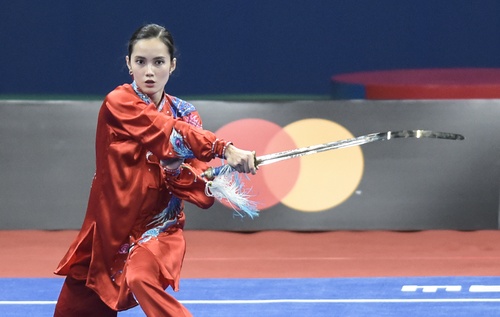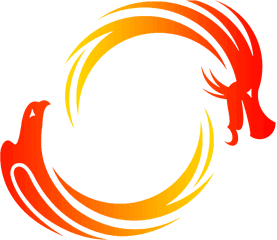


Sports
Wushu
Wushu
Wushu, also known as modern wushu or contemporary wushu, can be classed as an exhibition and a full-contact sport.
Modern wushu is composed of two disciplines: taolu and sanda. Taolu is a combination of gymnastics and martial arts.
competitors are judged and given points on their movements which include stances, kicks, punches, balances, jumps, sweeps and throws .
Competitive forms have time limits that can range from 1 minute, 20 seconds for the some external styles to over five minutes for internal styles.
Modern wushu competitors are increasingly training in aerial techniques such as 540 and 720 degree jumps and kicks to add more difficulty and style to their forms.
Sanda is a modern fighting method and sport much like kickboxing or Muay Thai, but includes many more grappling techniques.
Wushu was first incorporated into the Asian Games in 1990.
List of disciplines
- Sanda
- Sanshou
- Taolu
- Wushu
List of events
-
men
-
56KG
-
60KG
-
65KG
-
70KG
-
-
women
-
60KG
-
52KG
-
Sanshou (sometimes called Sanda or Lei Tai) which is a contact sport has similarities to Chinese boxing, Chinese wrestling, Shuai Chiao and also other Chinese grappling techniques such as Qin Na. it has all the combat aspect of Wushu. Sanda appears more like Kick boxing or Muay Thai but include much more grappling techniques.
List of events
-
men
-
52KG
-
56KG
-
60KG
-
65KG
-
70KG
-
75KG
-
48KG
-
45KG
-
-
women
-
48KG
-
52KG
-
60KG
-
56KG
-
65KG
-
45KG
-
70KG
-
Taolu is made up of various martial art patterns and maneuvers which the competitor are jugged and awarded points according to specific rules. These forms comprises of basic movements (stance, kicks, punches, balances, jumps, sweeps, throw) based on aggregate categories traditional Chinese Martial art style and can be changed for various competitions to highlight one's strength. Competitive forms have time limits that could range from 1minute to 20 seconds for some external styles and could range over 5minute for internal styles.
List of events
-
men
-
DUILIAN (TEAM EVENT) BARE HAND COMBAT
-
NANQUAN\NANGUN ALL-ROUND
-
DUILIAN (TEAM EVENT) APPARATUS COMBAT
-
JIANSHU\QIANGSHU ALL-ROUND
-
CHANGQUAN
-
TAIJIQUAN\TAIJIJIAN ALL-ROUND
-
DAOSHU\GUNSHU ALL-ROUND
-
DUILIAN
-
-
women
-
CHANGQUAN
-
NANQUAN\NANDAO ALL-ROUND
-
TAIJIQUAN\TAIJIJIAN ALL-ROUND
-
JIANSHU\QIANGSHU ALL-ROUND
-
WEAPON VS WEAPON DUILIAN
-
BARED-HAND VS BARED-HAND DUILIAN
-
DUILIAN
-
DUILIAN (TEAM EVENT) BARE HAND COMBAT
-
DUILIAN (TEAM EVENT) APPARATUS COMBAT
-
DAOSHU\GUNSHU ALL-ROUND
-
Wushu (or Kungfu) appeared in ancient China as early as 2,500 years ago. During the Spring and Autumn and the Warring States Periods (770 - 221BC), a method called Daoyin was evolved to promote health. In a tomb of Western Han Dynasty (206BC - 24AD), discovered near Changsha in Hunan Province, a silk scroll was found on which figures were drawn in different postures -- sitting in meditation, bending, or squatting. At the end of Eastern Han Dynasty (25 - 220AD), a renowned medical doctor, Hua Tuo, created a set of exercises called Wuqinxi (Five Animals Play), mimicking the movements of animals. One of Hua's disciples, also a devotee of Wuqingxi, was said to have lived over 100 years. Wu Pu, another Hua's follower, was reputed to have sound teeth and acute hearing and sight at his late 80s. Hua Tuo's inventive work has a far-reaching influence on the history of Chinese Wushu. During the Song (960-1279) and Ming (1368-1644) Dynasty, there appeared a large number of exercises, including Baduanjin (an eight parts exercise), Yijinjing (a system of muscular exercise), Taijiquan (also called Chinese shadow boxing), and Qigong (breathing exercise). Today, both in China and around the world, millions of people are fascinated by Chinese Wushu and benefit from it. It is believed to be effective in preventing and curing some diseases like cold, indigestion, and eyestrain. Among the many forms, Taijiquan may enjoy the highest popularity. Characterized by gentle, rhythmic movements, natural breathing, physical and mental coordination, it is of particular good to the old and weak, and those suffering from chronic diseases. History has it that Taijiquan first derived in Henan Province some 300 years ago, in the late Ming Dynasty. It conforms to the principles of "the vigorous subdued by the soft," and "overcome a force of 1,000 pounds with one of four ounces." Having undergone significant changes, its movements become more relaxed and graceful. When practicing Taijiquan, you need to be tranquil but alert in mind and coordinate vigor and gentleness. In 1956, a set of simplified Taijiquan of 24 forms was developed to stimulate its popularization. Shaolinquan is one of the well-known forms of Wushu with a long history. Situated in Henan Province, the Shaolin Temple can be dated back about 540. An Indian Buddhist priest named Bodhidharma (Damo in Chinese pinyin) traveled to China. When he arrived at the temple, he was refused to get in the door. So Damo went to a nearby cave and meditated until the monks recognized his religious prowess. Legend says that he bored a hole in the cave with his constant gaze. Later he taught the monks a set of exercises, which derived from Indian Yoga. And it is believed to be the origin of Shaolin Gongfu. The Shaolin gongfu is mainly used to protect the temple. It complies with the Buddhist principles of non-violence. The last version of the Asian Games, at Busan in 2002, was the first time Wushu was introduced as a competitive event in the Games calendar.
List of events
-
men
-
Taijiquan & Taijijian All-Round
-
Sanda -56kg
-
Changquan
-
Daoshu & Gunshu All-Round
-
Sanda -60kg
-
Sanda -70kg
-
Sanda -65kg
-
Nanquan & Nandao All-Round
-
Sanda 56kg
-
Sanda 60kg
-
Sanda 65kg
-
Sanda 70kg
-
Sanda 75kg
-
-
women
-
Sanda 60kg
-
Sanda -52kg
-
Sanda -60kg
-
Changquan
-
Jianshu & Qiangshu All-Round
-
Nanquan & Nandao All-Round
-
Taijiquan & Taijijian All-Round
-
Sanda 52kg
-
Related links
Sports Committee
The Sports Committee consist of one Chairman and a minimum of five members. The Chairman, nominated by his NOC, will be elected by the GA, while the Members preferably representing the 5 zones of t...
Sports and Environment Committee
The Sports and Environment Committee consist of One Chairman and Five Members. The Chairman, nominated by his NOC, will be elected by the GA, while the Members preferably representing the 5 zones o...
Sports for All Committee
The Sports for All Committee shall consist of One Chairman and Five Members. The Chairman, nominated by his NOC, will be elected by the GA, while the Members preferably representing the 5 zones of ...
Sports Federations
-

International Federation
International Wushu Federation
-

Asian Federation
Wushu Federation of Asia
